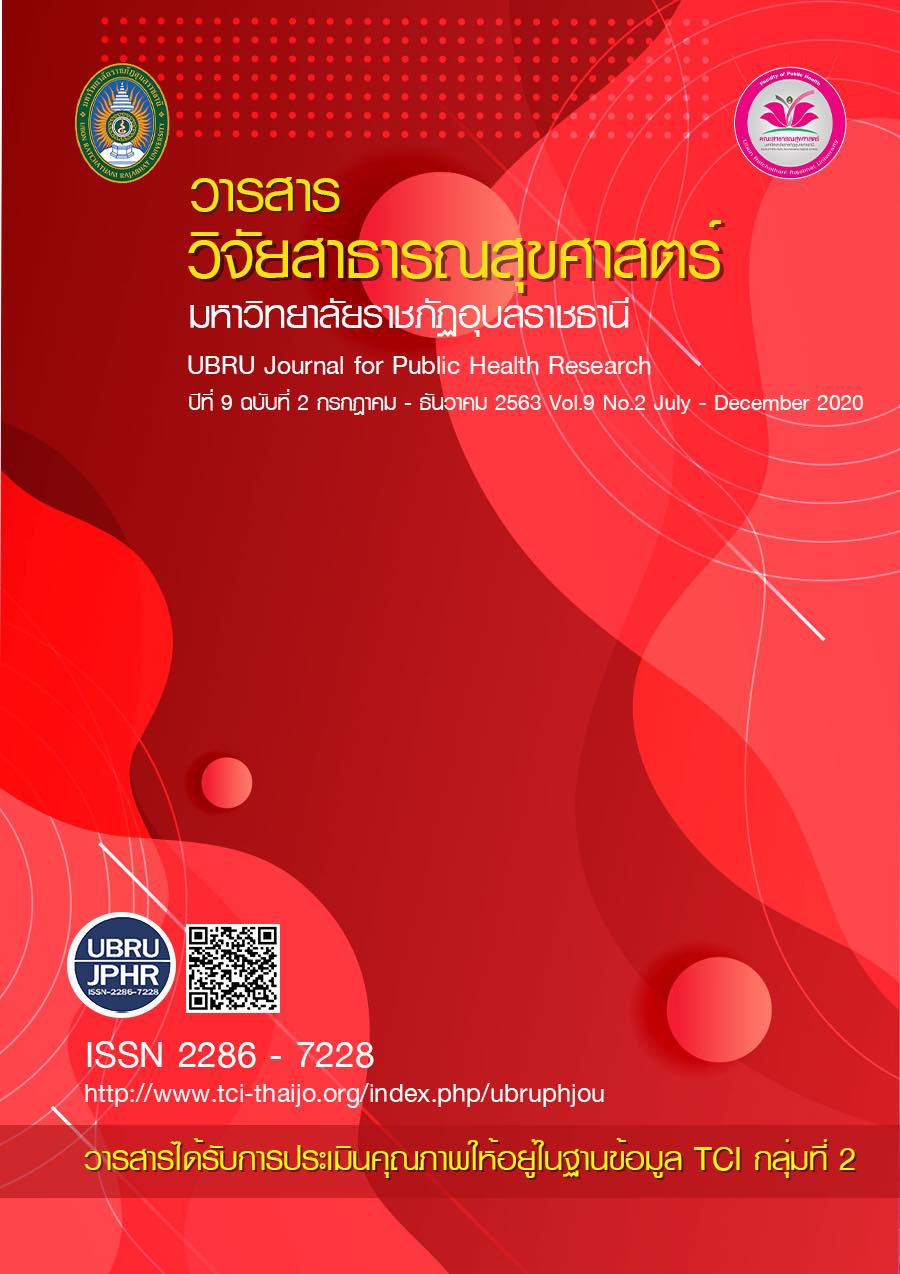Innovation for the Care of Older Persons in Thailand during the Thailand 4.0 Era
Keywords:
Innovation, Older persons, Thailand 4.0Abstract
There is a rapid transition to aging society worldwide. This causes each country to adapt to the changes by developing models of healthcare service that can respond to the issues and the needs of older persons. As a consequence, the healthcare costs for older persons tend to rise significantly, resulting in insufficient and incomprehensive care. In Thailand, policies and strategies have been constantly launched for older persons. Currently, Thaliand 4.0 is an important policy that involves changes in the economic structure driven by technology, creativity, and innovations with greater focus on the service sector for the country’s prosperity and sustainability. This policy affects all sectors of the country, especially the improvement of healthcare for older persons. This paper aims to describe the innovation for the care of older persons in Thailand during the Thailand 4.0 Era. The involved organizations and personnel should acknowledge and adapt to the changes to ensure the access, quality, equity, and efficiency of healthcare for older persons in order to respond to their problems and situations that will in turn lead to better quality of life among older persons.
References
กระทรวงวิทยาศาสตร์และเทคโนโลยี (2560). สำนักงานนวัตกรรมแห่งชาติ (องค์การมหาชน). สืบค้น 20 พฤศจิกายน 2560. จาก https://www.mhesi.go.th/main/th/org/1511-nia.html
กระทรวงสาธารณสุข. (2560). สรุป Thailand 4.0 ด้านสาธารณสุข. สืบค้น 20 พฤศจิกายน 2560. จาก https://ict.moph.go.th/upload_file/files/f458b9e53681c00be9b974f6f22e8f76.pdf
คณะกรรมการผู้สูงอายุแห่งชาติ กระทรวงพัฒนาสังคมและความมั่นคงของมนุษย์. (2553). แผนผู้สูงอายุแห่งชาติ ฉบับที่ 2 (พ.ศ. 2545-2564) ฉบับปรับปรุงครั้งที่ 1 พ.ศ. 2552. กรุงเทพ: โรงพิมพ์เทพเพ็ญวานิสย์.
ชัยพัฒน์ พุฒซ้อน และ กันตพัฒน์ พรศิริวัชรสิน. (2561). แนวทางการแก้ไขปัญหาสังคมผู้สูงอายุของประเทศไทยวารสารเครือข่ายส่งเสริมการวิจัยทางมนุษยศาสตร์และสังคมศาสตร์. 1(1), (25-36).
มูลนิธิสถาบันวิจัยและพัฒนาผู้สูงอายุไทย. (2559). สถานการณ์ผู้สูงอายุไทย 2558. กรุงเทพฯ: บริษัทอมรินทร์พริ้นติ้งแอนด์พับลิชชิ่ง จำกัด(มหาชน).
มูลนิธิสถาบันวิจัยและพัฒนาผู้สูงอายุไทย. (2560). สถานการณ์ผู้สูงอายุไทย 2559, (3-5). นครปฐม : พริ้นเทอรี่.
พีรภัทร โอวาทชัยพงศ์ และจักรกฤษณ์ ศุทธำกรณ์. (2555). Introduction to A Walking-Assisted Robot, BART LAB LL-EXO1. Proceedings of the CRIT 2012. ศูนย์เครือข่ายวิจัยประยกุต์ทางเทคโนโลยีหุ่นยนต์และชีวการแพทย์ คณะวิศวกรรมศาสตร์ มหาวิทยาลัยมหิดล.
สำนักงานเศรษฐกิจอุตสาหกรรม. (2556). รายงานการสำรวจข้อมูลเชิงลึกการพัฒนานวัตกรรมอาหารเชิงสุขภาพเพื่อรองรับสังคมผู้สูงอายุ (Aging Society) ณ ประเทศญี่ปุ่น ระหว่างวันที่ 16 – 22 กุมภาพันธ์ 2556. สืบค้น 20 พฤศจิกายน 2560. จากhttp://www.oie.go.th/sites/default/files/attachments/article/foodagingsociety.pdf
อาทิตย์ เคนมี และ วีรพงษ์ สุนทรฉัตราวัฒน์. (2560). สังคมสูงวัย & วิกฤติสโลว์ไลฟ์. สืบค้นเมื่อวันที่ 1 พฤศจิกายน 2561. จาก https://waymagazine.org/aging_society/
อาภรณ์ ชีวะเกรียงไกร. (2560). ผลกระทบของสังคมผู้สูงอายุของประเทศไทย. กรุงเทพธุรกิจ. สืบค้นเมื่อวันที่ 1 พฤศจิกายน 2561. จาก http:/www.bangkokbiznews.com/blog/detail/
อรุณี ชัยสวัสดิ์. (2560). กระบวนการสร้างนวัตกรรม. สืบค้นเมื่อวันที่ 1 พฤศจิกายน 2560. จากhttp://www.tistr.or.th/tistrblog/?p=3574
Mast, M., Burmester, M., Krüger, K., & Fatikow, S. (2012). User-Centered Design of a Dynamic-Autonomy Remote Interaction Concept for Manipulation-Capable Robots to Assist Elderly People in the Home. Journal of Human-robot interaction, 1(1), 96-118. Retrieved November 16, 2018 from http://www.humanrobotinteraction.org/journal/index.php/HRI/article/view/19/0
Downloads
Published
How to Cite
Issue
Section
License
เนื้อหาและข้อมูลในบทความที่ลงตีพิมพ์ในวารสารวารสารวิจัยสาธารณสุขศาสตร์ มหาวิทยาลัยราชภัฏอุบลราชธานี ถือเป็นข้อคิดเห็นและความรับผิดชอบของผู้เขียนบทความโดยตรงซึ่งกองบรรณาธิการวารสาร ไม่จำเป็นต้องเห็นด้วย หรือร่วมรับผิดชอบใดๆ
บทความ ข้อมูล เนื้อหา รูปภาพ ฯลฯ ที่ได้รับการตีพิมพ์ในวารสารนี้ ถือเป็นลิขสิทธิ์ของวารสารฯ หากบุคคลหรือหน่วยงานใดต้องการนำทั้งหมดหรือส่วนหนึ่งส่วนใดไปเผยแพร่ต่อหรือเพื่อกระทำการใดๆ จะต้องได้รับอนุญาตเป็นลายลักอักษรณ์จากบรรณาธิการวารสารนี้ก่อนเท่านั้น


